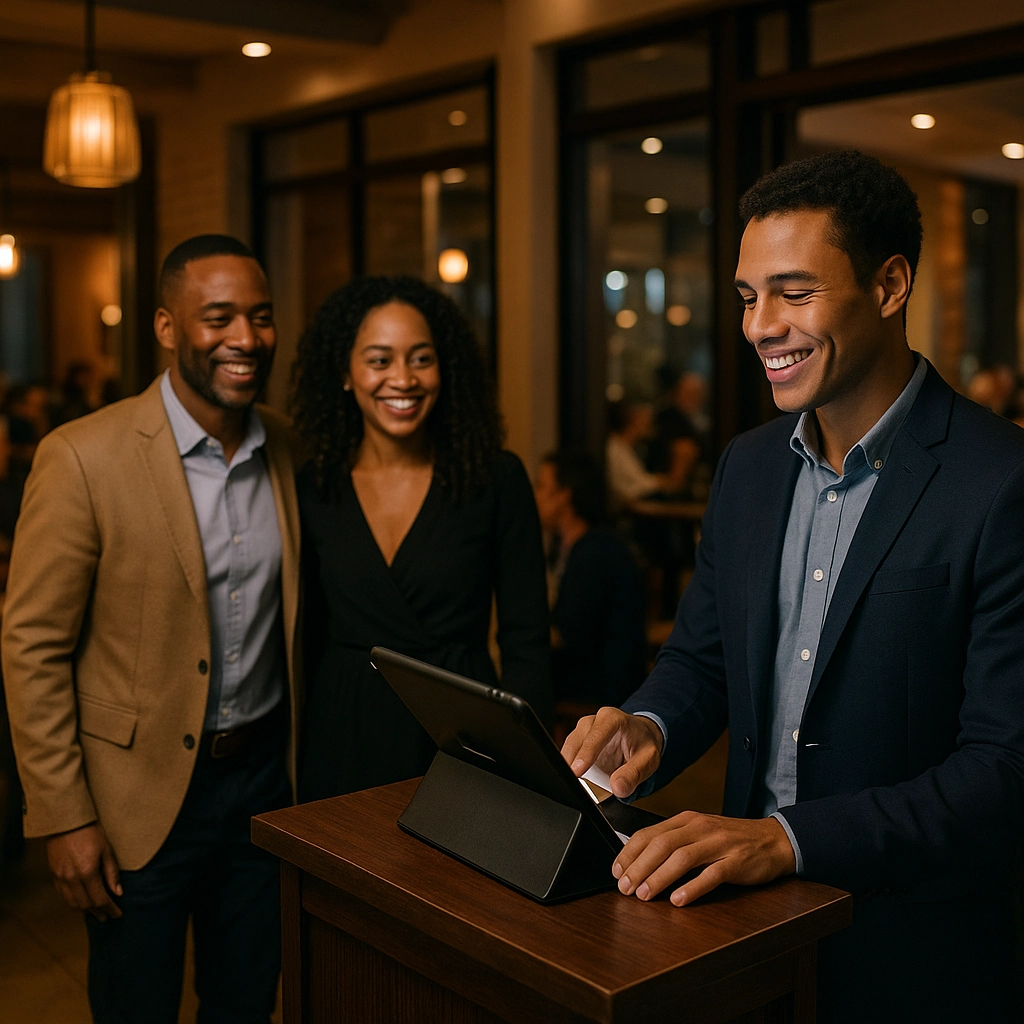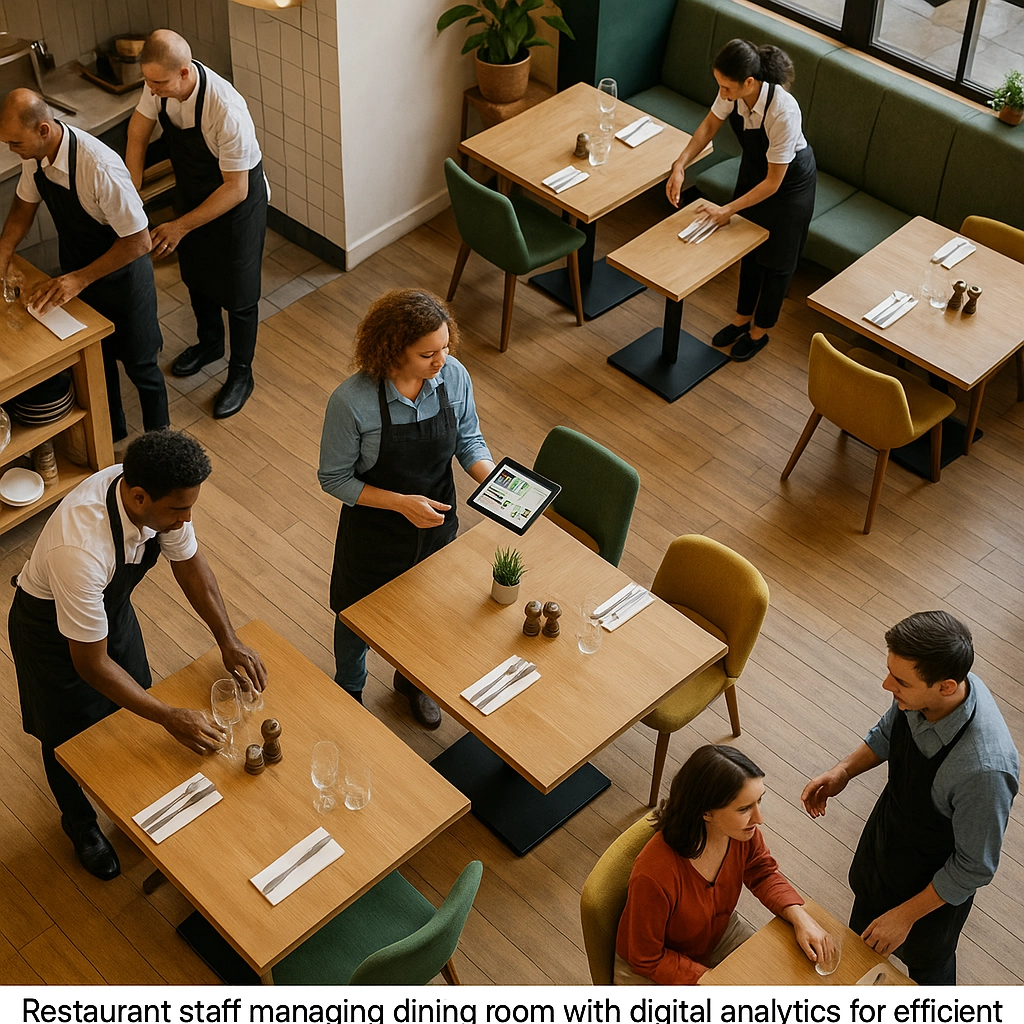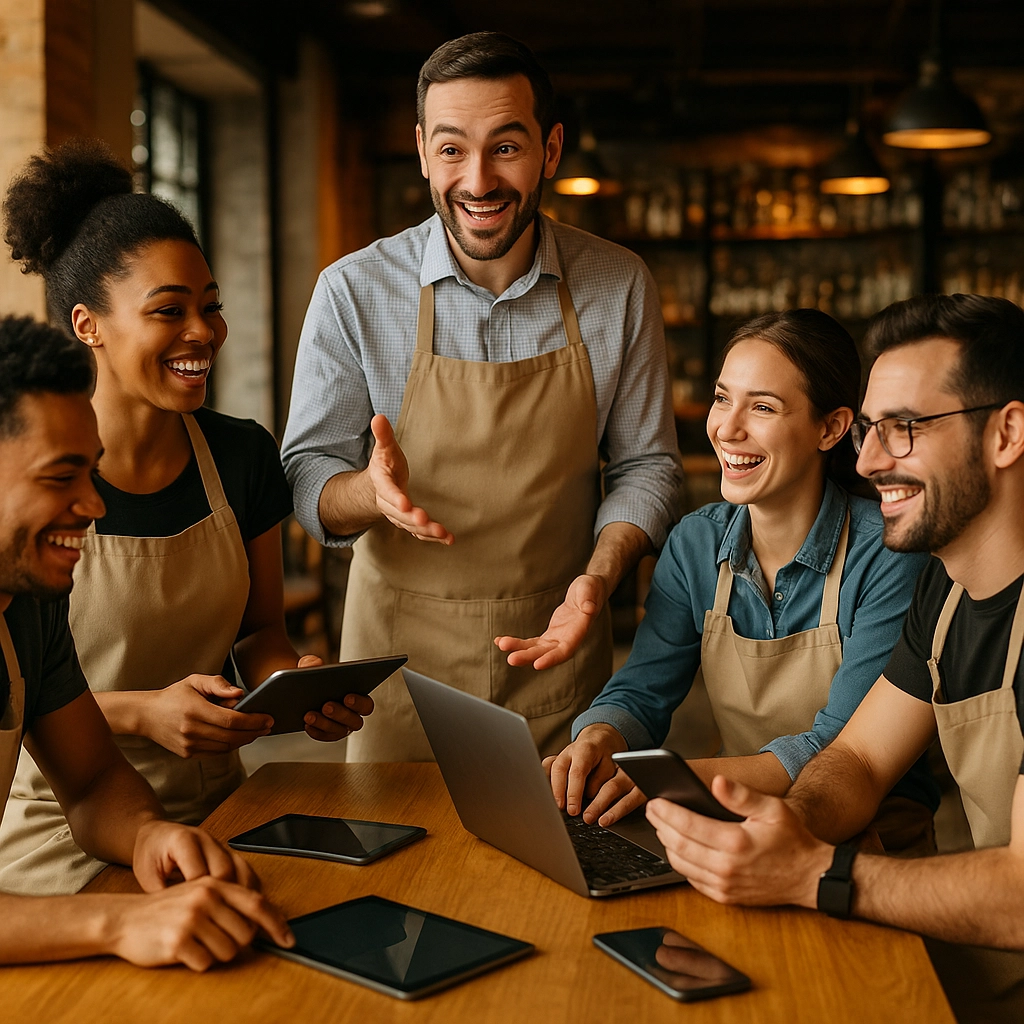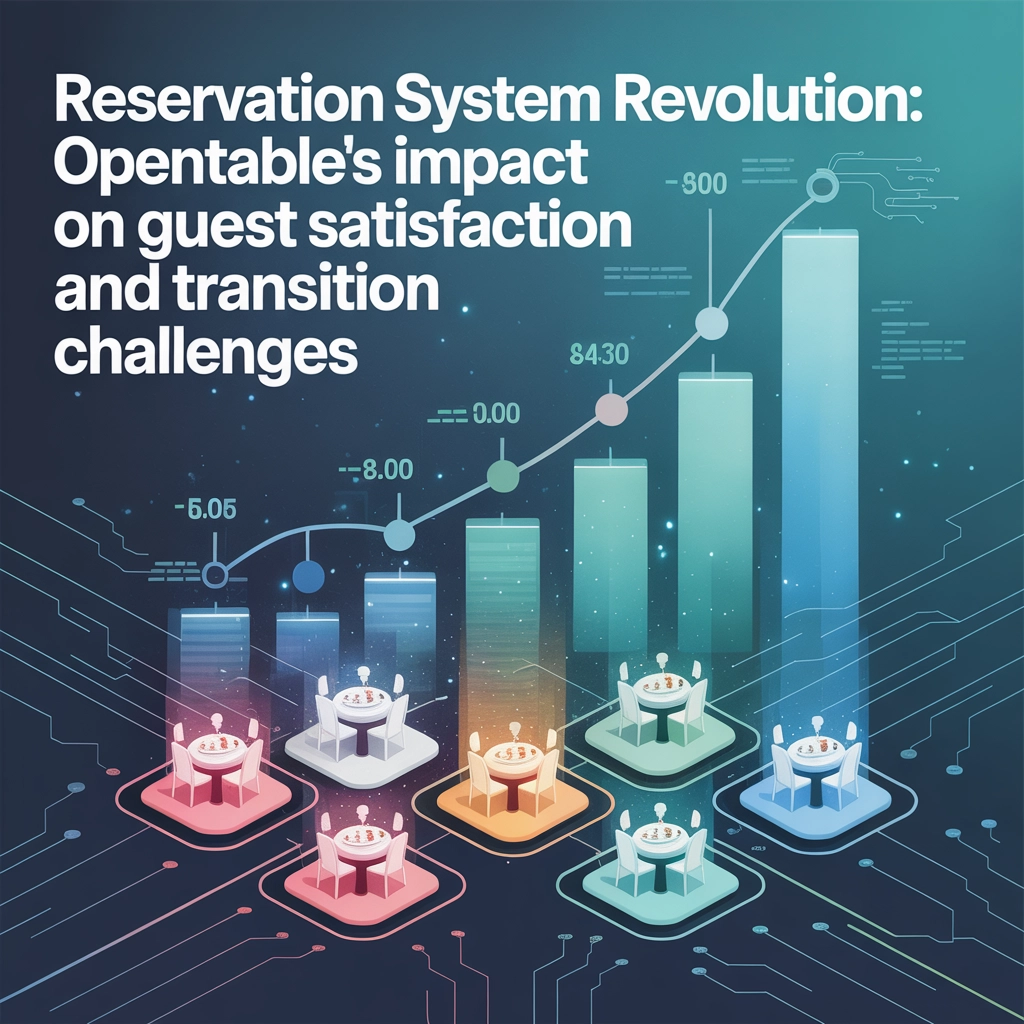The Digital Transformation of Reservations: Setting a New Standard
In today’s competitive hospitality environment, the humble reservation system has become a frontline battleground for guest satisfaction and operational efficiency. OpenTable, the trailblazer in digital restaurant bookings, has dramatically reshaped how food, beverage, and hospitality businesses manage their front-of-house operations. From independent eateries to global brands, the shift from manual or disconnected digital systems to a seamless table management platform has delivered both wins and growing pains—changing the guest experience forever.
OpenTable’s Game-Changing Impact on Guest Satisfaction
When OpenTable pioneered real-time online reservations in 1998, it didn’t just replace the clipboard and phone. It introduced data-driven management and the promise of flawless service before a guest even walked in the door. According to recent hospitality tech trends and industry reporting, restaurants leveraging OpenTable’s full capabilities have realized:
- 25% increase in reservation management efficiency: By consolidating bookings from multiple channels, automating confirmations, and syncing diner preferences, hosts and managers gain vital time back each shift. This means less time shuffling paper and more time focusing on hospitality.
- 15% decrease in guest wait times: From predictive table turns to live waitlist features, OpenTable’s system streamlines the flow of guests—vital on busy nights and crucial for banishing the dreaded “host stand bottleneck.” For example, The Smith in New York credits smart seating algorithms with drastically shrinking peak wait times and turning uneasy, impatient first impressions into positive reviews.
- 18% boost in staff net promoter scores (NPS): Employee satisfaction often tracks with operational simplicity and tool reliability. OpenTable’s cloud-based platform replaced legacy systems and eliminated constant IT headaches, letting staff focus on crafting memorable moments. Managers at Girl & The Goat report better morale and lower stress after switching to the new system, corroborated by higher internal NPS surveys.
OpenTable also gives operators a deeper understanding of their guests. With CRM tools, previous visit info, and personalized notes, servers turn tablet knowledge into genuine connections—remembering anniversaries, allergies, or favorite bottles of wine. In the age of personalized hospitality, these touches ignite guest loyalty and spur word-of-mouth.

Real-World Results: Data That Moves the Needle
These improvements aren’t academic. Increased operational efficiency means hosts can accommodate more diners without adding staff. Restaurants like San Francisco’s acclaimed Zuni Café used deeper insights from OpenTable to analyze seating trends and experiment with new secondary booking windows, recouping revenue once lost to inefficient table turns.
Meanwhile, chain operators in competitive markets—like the Smith, the Darden Group, or emerging concepts such as Hearth and Hill—depend on robust reservation reporting to refine shift planning and promotional campaigns.
The Transition Challenge: Navigating Growing Pains
Despite OpenTable’s undeniable benefits, the move to digital reservation platforms is not always frictionless. Operators report several recurring pain points when transitioning away from legacy systems or alternative platforms.
Intense Market Competition
OpenTable no longer stands alone. Rivals like Resy, Tock, and SevenRooms target restaurants with varied pricing models, unique features, and deeper integrations for loyalty programs or events. Resy’s zero per-cover fee, for example, appeals to restaurants watching costs in slim-margin environments.
The competition has led to a “multi-homing” challenge: some venues list on multiple platforms, complicating inventory management, tracking, and reporting. OpenTable has responded with incentives, but the landscape remains fragmented.
Pricing Model Pressures
OpenTable’s per-guest fee, sometimes exceeding $1 per seated diner with a monthly base subscription, can be steep—especially for small venues or those still bouncing back post-pandemic. Transparent, value-focused pricing is increasingly in demand as competitors offer freemium tiers or alternative billing structures.
Technology & Feature Set Gaps
OpenTable’s basic platform is instantly familiar, but as mobile-first hospitality apps proliferate, expectations have shifted. Industry voices argue for innovation: integrated digital menus, QR code table ordering, seamless payment options, and built-in loyalty or marketing. While OpenTable has made progress, forward-thinking restaurants like MADRE Greenpoint seek robust, customizable tech that grows with their business—often leading them to test multiple solutions before settling.

Training, Onboarding, & Change Management
No system—however elegantly designed—succeeds without buy-in from staff. Transitioning from manual or legacy booking systems requires upfront training and ongoing support to avoid operational hiccups. This includes soft skills, as host staff must master not only the tools, but also dialogue around booking policies, last-minute changes, and waitlist etiquette.
Hospitality groups like Prime Hospitality often pair technology rollouts with hands-on workshops to ensure smooth adoption and maintain guest service standards. The lesson: successful adoption goes beyond software and into culture, communication, and ongoing learning.
Platform Trust & Reservation Fraud
With scale come new risks. High-profile reservation fraud incidents—including those perpetrated by platform insiders—highlight the necessity for sophisticated fraud detection, confirmation protocols, and transparent recourse for both guests and restaurants.
A Market in Flux: The Future of Reservation Systems
Restaurant reservation tech is a classic “two-sided marketplace,” driven by network effects: the more diners on OpenTable, the more restaurants want to list there, and vice versa. Historically, OpenTable solved the “chicken-and-egg” trap by first making life easier for partner venues, then attracting guests.
But as consumers become platform-agnostic, loyalty shifts fluidly based on UX, perks, and available tables. Restaurants should expect this market to remain dynamic, with ongoing consolidation, new entrants, and inventive features shifting industry standards almost annually.

Key Takeaways for Operators
- Guest experience is the new brand currency. Reservation efficiency, personalized communication, and streamlined seating set clear leaders apart.
- Competitive benchmarking is essential. Evaluate reservation system options based on price, feature set, user experience, and integration.
- Staff training matters. Invest in education—not just for ‘how’ but for ‘why’—to ensure your team is equipped and motivated to use the full power of digital reservations.
- Monitor, iterate, refine. Leverage analytics to spot friction, enhance guest flow, and adapt to changing diner preferences.
- Stay agile. The field is evolving—what’s best today may need upgrading tomorrow. Regularly survey emerging tools, guest feedback, and industry best practices.
For more insights into hospitality tech, read our feature on labor cost solutions, or explore how guest service is evolving at hearth and hill.
Ready to future-proof your front-of-house? Have a story about switching reservation systems or a tip for maximizing OpenTable ROI? Share your experience in the comments below, connect with us on LinkedIn, and check out more industry tips and expert features at Food & Beverage Magazine.
Written by Michael Politz, Author of Guide to Restaurant Success: The Proven Process for Starting Any Restaurant Business From Scratch to Success (ISBN: 978-1-119-66896-1), Founder of Food & Beverage Magazine, the leading online magazine and resource in the industry. Designer of the Bluetooth logo and recognized in Entrepreneur Magazine's “Top 40 Under 40” for founding American Wholesale Floral. Politz is also the founder of the Proof Awards and the CPG Awards and a partner in numerous consumer brands across the food and beverage sector.






